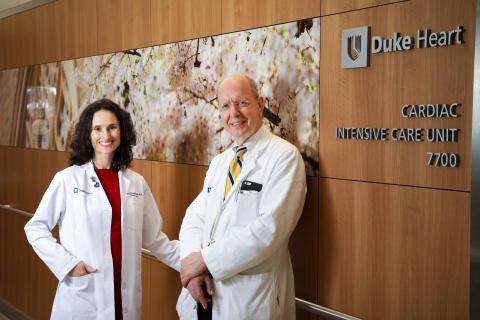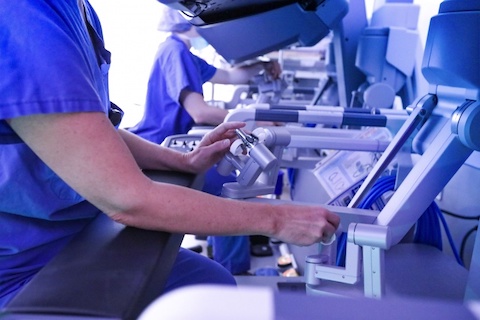
Donald D. Glower Jr., MD, had a roundabout entry into the field of robotics and minimally invasive surgery. Originally hired in 1989 for coronary bypass surgery, he soon became involved in minimally invasive surgery using the Heartport Port Access System in 1996. Duke was the 4th institution in the United States to perform surgeries using this recently Food and Drug Administration (FDA)-approved equipment, and among the first dozen institutions to use robotic techniques for mitral repair, mammary artery harvesting, atrial septal defect repair, and coronary bypasses.
Dr. Glower, along with several other Duke surgeons, traveled to Emory University School of Medicine in Atlanta, Georgia, to train under Douglas A. Murphy, MD, an early advocate for minimally invasive cardiac surgery and a principal investigator in early clinical trials in robotically assisted heart surgery.
Now thoracic surgeons are coming on with previous experience in robotic minimally invasive surgery during their residency training. By the time Brittany A. Zwischenberger, MD, joined the team, the Surgical Education and Activities Lab, a state of the art surgical simulation center, offered 24-hour access to the da Vinci Surgical System for practice, which she uses before all her robotic surgery cases. Dr. Zwischenberger’s interest in robotics began during her fellowship, when she attended a robotic surgery course hosted by the American Association for Thoracic Surgery.
Dr. Glower, who has been with Duke for 40 years and in robotics for the last half of that time, says that under the leadership of Allan D. Kirk, MD, PhD, Dean of Surgical Disciplines, and Anthony G. Visco, MD, head of the robotics committee, Duke has fostered a supportive environment for this still-developing field.

Dr. Zwischenberger says that she and her partners encourage each other to use the robotic technology. “The cardiac surgeons will assist each other at the console and at the bedside,” she explains. Dr. Zwischenberger’s mentors, Dr. Glower and Jeffrey G. Gaca, MD, encouraged her to expand the cardiac robotic program when she joined the faculty in 2018, which she did by focusing on left internal mammary artery takedown for single vessel coronary artery bypass grafting.
“If we’re to survive as a field, we have to have a critical mass of people learning these techniques,” says Dr. Glower. Within the U.S., about twenty hospitals perform 75% of all robotically assisted surgeries, and Duke performs an average of 30 robotic mitral repairs a year. Duke uses C-SATS, an online feedback program, which connects with other cardiac surgeons performing these techniques. “This is a niche operation with few surgeons performing nationwide, so access to this community of cardiac surgeons with experience in robotics is invaluable,” says Dr. Zwischenberger.
Dr. Glower recalled a mentor that once forecasted “the 20th century was about decreasing mortality, and the 21st century will be about decreasing morbidity.” Robotic surgery offers unique minimally invasive opportunities in a traditionally maximally invasive specialty, and as the technology advances, surgeons can treat a wider spectrum of diseases with safe, minimally invasive techniques than ever before.
“The robot is only a tool in your armamentarium of surgical techniques to treat heart disease,” says Dr. Zwischenberger. “The robot technology is only as good as the surgeon behind every stitch and the team surrounding him or her.”